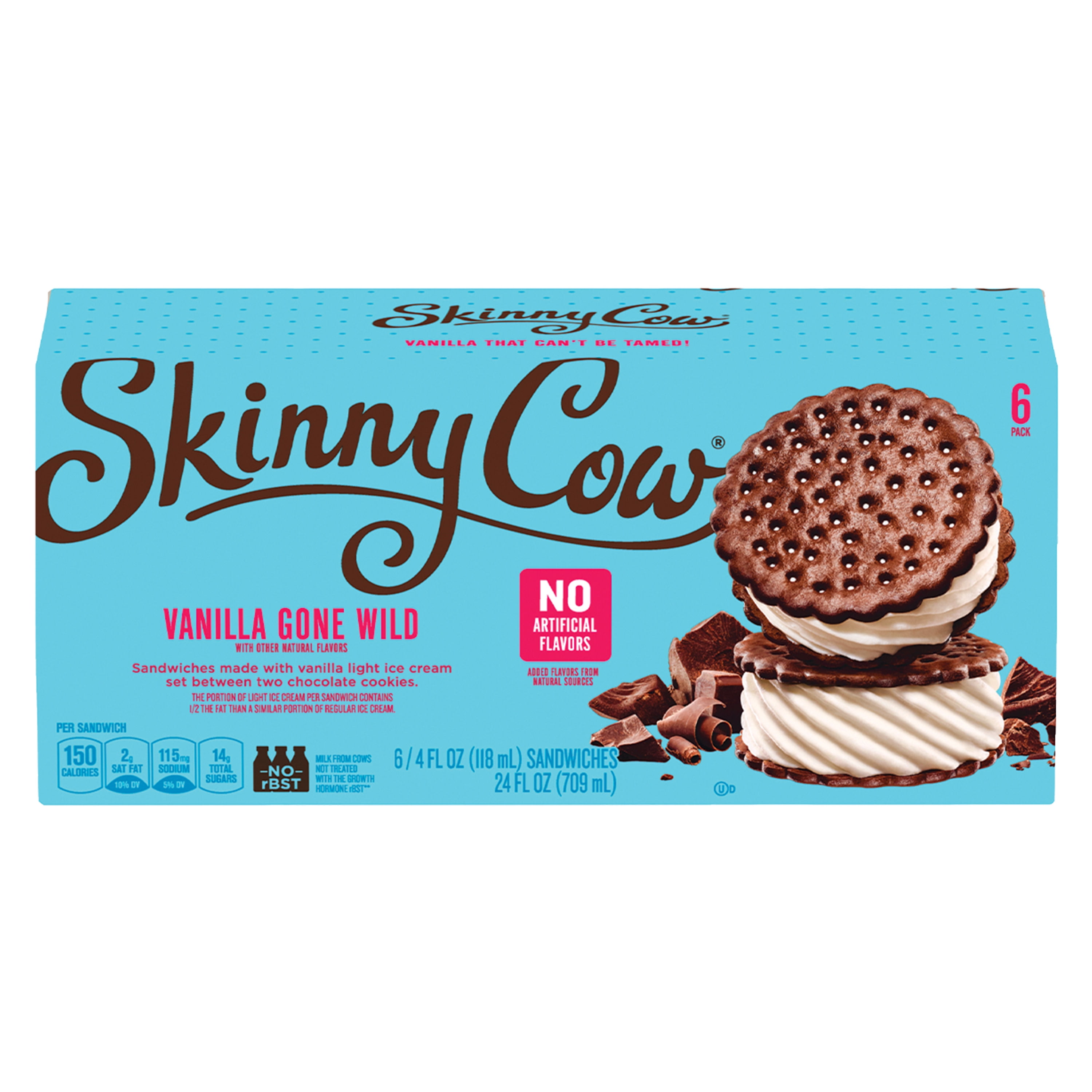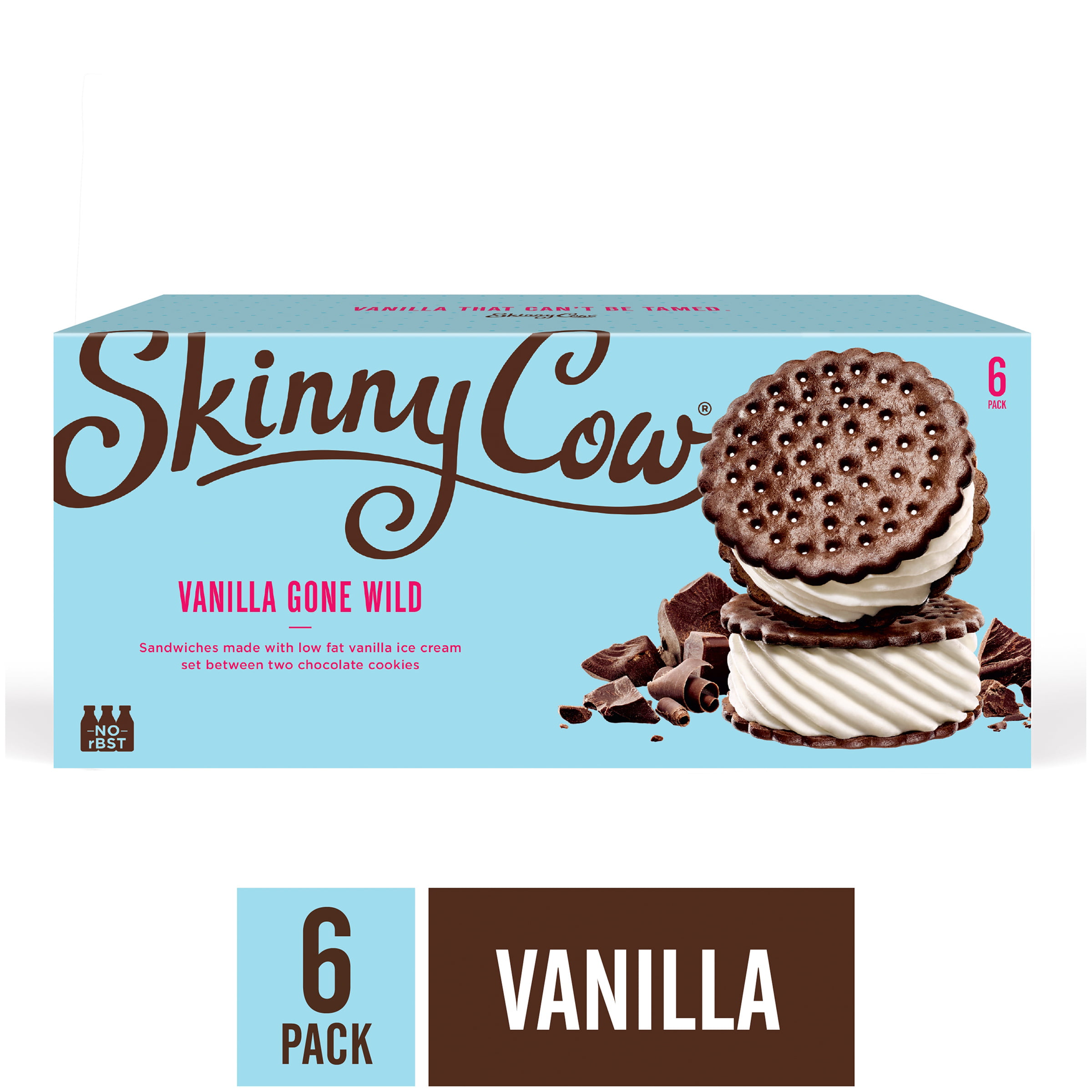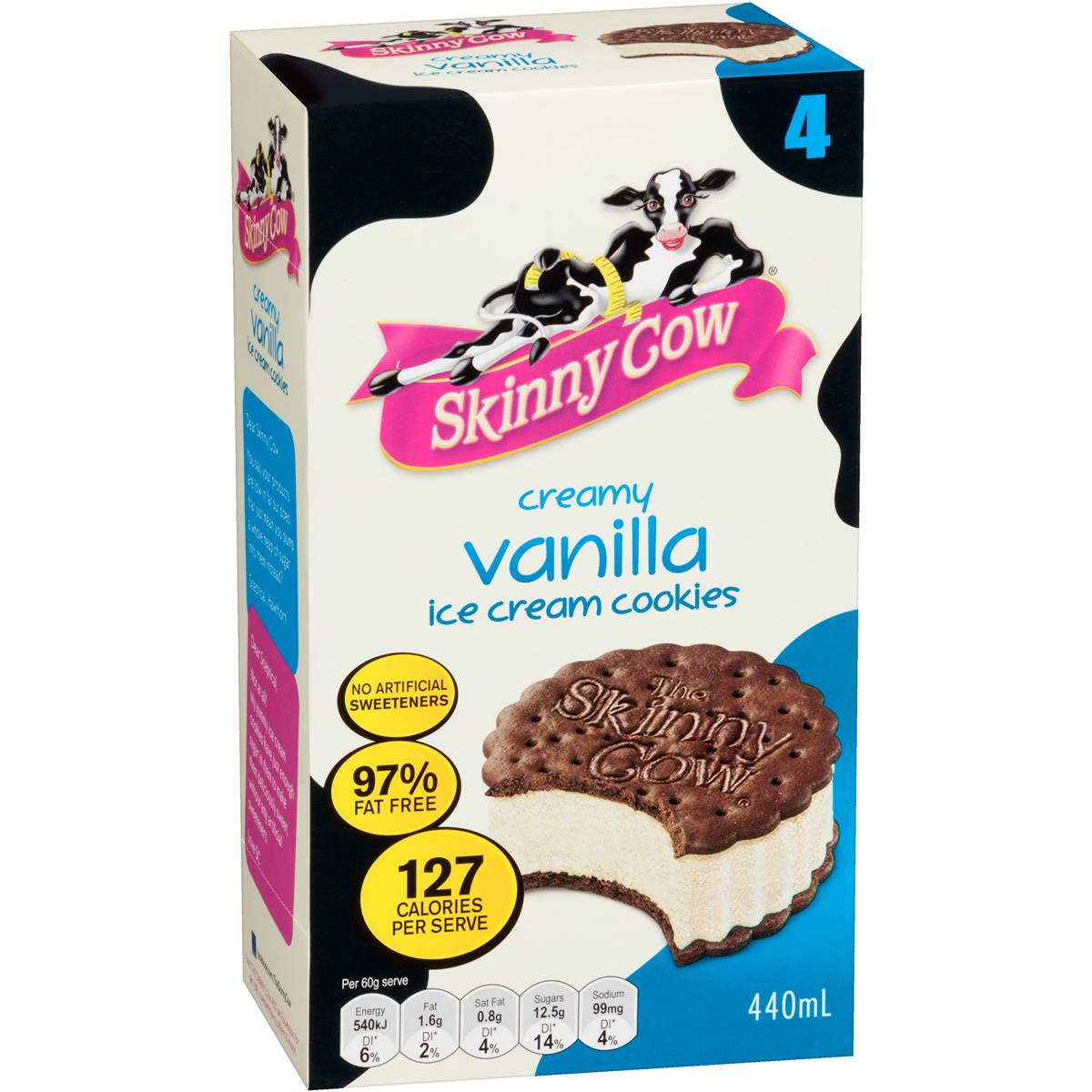Skinny Cow Ice Cream

Skinny Cow ice cream is a popular brand known for its low-calorie and guilt-free indulgence. It caters to health-conscious individuals seeking a sweet treat without compromising their dietary goals.
Target Audience and Unique Selling Propositions, Skinny cow ice cream
Skinny Cow ice cream targets individuals who are mindful of their calorie intake and want to enjoy ice cream without feeling guilty. The brand’s unique selling propositions include:
* Low-calorie options: Skinny Cow ice cream offers a range of flavors with significantly fewer calories compared to traditional ice cream brands.
* Delicious flavors: The brand provides a variety of flavors to satisfy different taste preferences, ensuring a delicious and enjoyable experience.
* Convenient packaging: Skinny Cow ice cream is available in individual servings, making it easy to control portion sizes and prevent overindulgence.
* Nutritional value: The brand prioritizes nutritional value by using ingredients that are low in fat and sugar, while still delivering a satisfying taste.
History of Skinny Cow Ice Cream
Skinny Cow ice cream was launched in 2007 by the Dreyer’s Grand Ice Cream company. The brand was initially marketed as a healthier alternative to traditional ice cream, catering to the growing demand for low-calorie desserts. Over the years, Skinny Cow has expanded its product line to include various flavors and formats, solidifying its position as a leading brand in the low-calorie ice cream market.
Examples of Skinny Cow Ice Cream Flavors and Nutritional Information
Skinny Cow ice cream offers a diverse range of flavors, each with its unique nutritional profile. Here are some examples:
- Chocolate Fudge Brownie: This classic flavor features rich chocolate ice cream with chunks of brownie. One serving (1/2 cup) contains approximately 150 calories, 5 grams of fat, and 18 grams of sugar.
- Cookies & Cream: This popular flavor combines vanilla ice cream with crunchy chocolate cookie pieces. One serving (1/2 cup) contains approximately 140 calories, 4 grams of fat, and 17 grams of sugar.
- Strawberry Swirl: This refreshing flavor features strawberry ice cream with swirls of strawberry sauce. One serving (1/2 cup) contains approximately 130 calories, 3 grams of fat, and 16 grams of sugar.
Comparison with Other Low-Calorie Ice Cream Brands
| Brand | Flavor Variety | Nutritional Content (per serving) | Price (per pint) |
|---|---|---|---|
| Skinny Cow | High | Low calories, low fat, moderate sugar | Moderate |
| Halo Top | High | Very low calories, low fat, low sugar | High |
| Enlightened | Moderate | Low calories, low fat, low sugar | Moderate |
| Yasso | Moderate | Low calories, low fat, low sugar | High |
Marketing and Branding Strategies

Skinny Cow ice cream has successfully carved a niche for itself in the competitive ice cream market by employing a clever marketing strategy that targets a specific audience and leverages a strong brand identity. This approach has allowed Skinny Cow to stand out and attract a loyal following.
Target Audience and Messaging
Skinny Cow’s target audience is primarily women who are health-conscious and looking for guilt-free indulgence. The brand’s messaging focuses on offering delicious ice cream with fewer calories and fat, appealing to those who want to enjoy their favorite treat without sacrificing their fitness goals. This message is consistently conveyed through their marketing materials, emphasizing the “skinny” aspect of their product while still highlighting the indulgent flavor experience.
Brand Image and Personality
Skinny Cow has cultivated a brand image that is both fun and approachable, aligning with its target audience. The brand’s personality is playful and lighthearted, often using humor and relatable scenarios in its advertising campaigns. This approach helps to create a sense of connection with consumers, making them feel like Skinny Cow understands their desire for a treat that fits into their lifestyle.
Key Elements of Branding
- Logo: The Skinny Cow logo features a stylized cow with a pink ribbon around its neck, symbolizing femininity and sweetness. The logo is simple yet memorable, effectively conveying the brand’s message of indulgence with a touch of playfulness.
- Packaging: Skinny Cow’s packaging is designed to be eye-catching and appealing to its target audience. The bright colors, playful graphics, and clear calorie information on the front of the packaging make it easy for consumers to identify the product and understand its key benefits.
- Advertising Campaigns: Skinny Cow’s advertising campaigns often feature humorous scenarios that resonate with its target audience. These campaigns highlight the product’s low-calorie and low-fat content while still emphasizing the delicious taste. For example, one memorable campaign featured a group of women enjoying Skinny Cow ice cream while watching a movie, highlighting the idea of indulging without guilt.
Social Media and Influencer Marketing
Skinny Cow has effectively leveraged social media platforms like Facebook, Instagram, and Twitter to engage with its target audience. The brand regularly posts content that is relevant to its audience’s interests, such as recipes, fitness tips, and fun facts about ice cream. Skinny Cow also uses influencer marketing, partnering with popular bloggers and social media personalities who align with its brand image and target audience. These partnerships help to increase brand awareness and reach a wider audience.
Consumer Perception and Impact

Skinny Cow ice cream has carved a niche for itself in the competitive ice cream market by appealing to health-conscious consumers seeking indulgence without the guilt. Its positioning as a low-calorie, low-fat option has resonated with a segment of the population looking for healthier alternatives to traditional ice cream brands.
Consumer Perception of Skinny Cow Ice Cream
Consumer perception of Skinny Cow ice cream is largely positive, driven by its perceived benefits of low calorie count and fat content. Many consumers appreciate the brand’s ability to satisfy their cravings for ice cream while aligning with their dietary goals.
- Perceived Benefits:
- Lower calorie and fat content compared to traditional ice cream.
- Variety of flavors and formats, including cones, cups, and bars.
- Availability in major grocery stores and convenience stores.
- Affordability compared to other low-calorie ice cream options.
- Perceived Drawbacks:
- Some consumers find the taste less rich and creamy compared to traditional ice cream.
- Concerns about artificial sweeteners and other ingredients used in low-calorie products.
- Limited availability of certain flavors compared to traditional brands.
Customer Reviews and Testimonials
Customer reviews and testimonials about Skinny Cow ice cream are generally positive, with many praising its taste, affordability, and ability to satisfy cravings. However, some reviews highlight concerns about the artificial ingredients and the taste being less rich compared to traditional ice cream.
“I love Skinny Cow ice cream! It’s a great way to indulge without feeling guilty. The flavors are delicious, and I especially love the chocolate fudge brownie.” – Sarah J.
“Skinny Cow ice cream is a bit too artificial for me. It doesn’t taste as creamy as real ice cream, and I’m not a fan of the artificial sweeteners.” – John M.
Impact on the Ice Cream Market
Skinny Cow ice cream has played a significant role in shaping the low-calorie food trend within the ice cream market. Its success has inspired other brands to introduce similar low-calorie options, creating a more diverse and competitive landscape for health-conscious consumers.
- Increased Competition: The rise of Skinny Cow has prompted other ice cream brands to develop low-calorie and low-fat alternatives, creating a more competitive market.
- Shift in Consumer Preferences: Skinny Cow has contributed to a shift in consumer preferences towards healthier ice cream options, with a growing demand for low-calorie and low-fat alternatives.
- Innovation and Product Development: The success of Skinny Cow has encouraged innovation in the ice cream industry, with brands focusing on developing healthier and more appealing low-calorie options.
Future Trends and Opportunities
The future of Skinny Cow ice cream is promising, with several potential trends and opportunities emerging in the evolving market landscape.
- Growing Demand for Healthier Options: As health consciousness continues to rise, the demand for healthier ice cream options like Skinny Cow is expected to increase.
- Expansion into New Markets: Skinny Cow can explore expanding into new markets, both domestically and internationally, to reach a wider audience.
- Product Innovation and Diversification: Continued product innovation and diversification, such as introducing new flavors, formats, and ingredients, can help Skinny Cow maintain its appeal and attract new customers.
- Sustainability and Ethical Sourcing: Consumers are increasingly prioritizing sustainability and ethical sourcing. Skinny Cow can leverage these trends by focusing on sustainable practices and using ethically sourced ingredients.
Skinny Cow ice cream, with its low-calorie promise, always reminded me of Uncle Buck, the lovable but chaotic character from the Uncle Buck TV show. Just like Uncle Buck, Skinny Cow offered a sweet escape from the everyday, even if it was just a momentary indulgence.
Perhaps, like Uncle Buck, it wasn’t about perfection, but about finding joy in the little things, even if it meant a bit of guilt-free indulgence.
Skinny Cow ice cream, with its low-calorie promise, is a testament to our modern desire for indulgence without the guilt. Perhaps a similar yearning for something both satisfying and responsible drove Owen Smith, a figure whose political life is examined in detail here.
Like Skinny Cow, Owen Smith aimed to provide a palatable alternative, but whether he succeeded in achieving his goals is a question that continues to be debated.
